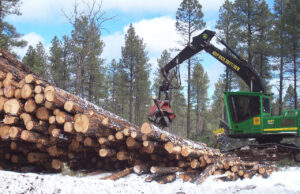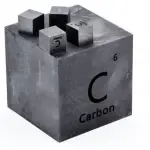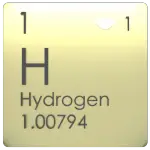About Pine Wood
In general, wood is a porous and fibrous structural tissue found in the stems and roots of trees and other woody plants. It is an organic material – a natural composite of cellulose fibers that are strong in tension and embedded in a matrix of lignin that resists compression. It is common to classify wood as either softwood or hardwood. The wood from conifers (e.g. pine) is called softwood, and the wood from dicotyledons (usually broad-leaved trees, e.g. oak) is called hardwood. These names are a bit misleading, as hardwoods are not necessarily hard, and softwoods are not necessarily soft.
Summary
| Name | Pine Wood |
| Phase at STP | solid |
| Density | 500 kg/m3 |
| Ultimate Tensile Strength | 35 MPa |
| Yield Strength | N/A |
| Young’s Modulus of Elasticity | 10 GPa |
| Brinell Hardness | 2 BHN |
| Melting Point | N/A |
| Thermal Conductivity | 0.12 W/mK |
| Heat Capacity | 2300 J/g K |
| Price | 0.5 $/kg |
Composition of Pine Wood
Wood is composed of dry matter and water. Dry matter is the part of wood that does not contain water. Aside from water, wood has three main components. Cellulose, a crystalline polymer derived from glucose, constitutes about 41–43%. Next in abundance is hemicellulose, which is around 20% in deciduous trees but near 30% in conifers. Lignin is the third component at around 27% in coniferous wood vs. 23% in deciduous trees. Cellulose is an organic compound with the formula (C6H10O5)n, a polysaccharide consisting of a linear chain of several hundred to many thousands of β(1→4) linked D-glucose units. The dry matter contains a certain amount of elements: 50 % carbon (C), 41 % oxygen (O), and 6 % hydrogen (H). The rest are different substances, mainly nitrogen (N), sulphur (S) and ash. Because there are many vaporizable elements, such as oxygen and hydrogen in the wood’s dry matter, the flame is long.
Applications of Pine Wood

Pines are among the most commercially important tree species valued for their timber and wood pulp throughout the world. Because pines have no insect- or decay-resistant qualities after logging, untreated they are generally recommended for construction purposes as indoor use only. Some species have large seeds, called pine nuts, that are harvested and sold for cooking and baking.
Mechanical Properties of Pine Wood
Strength of Pine Wood
In mechanics of materials, the strength of a material is its ability to withstand an applied load without failure or plastic deformation. Strength of materials basically considers the relationship between the external loads applied to a material and the resulting deformation or change in material dimensions. In designing structures and machines, it is important to consider these factors, in order that the material selected will have adequate strength to resist applied loads or forces and retain its original shape.
Strength of a material is its ability to withstand this applied load without failure or plastic deformation. For tensile stress, the capacity of a material or structure to withstand loads tending to elongate is known as ultimate tensile strength (UTS). Yield strength or yield stress is the material property defined as the stress at which a material begins to deform plastically whereas yield point is the point where nonlinear (elastic + plastic) deformation begins. In case of tensional stress of a uniform bar (stress-strain curve), the Hooke’s law describes behaviour of a bar in the elastic region. The Young’s modulus of elasticity is the elastic modulus for tensile and compressive stress in the linear elasticity regime of a uniaxial deformation and is usually assessed by tensile tests.
See also: Strength of Materials
Ultimate Tensile Strength of Pine Wood
Ultimate tensile strength of Pine Wood is 35 MPa.
Yield Strength of Pine Wood
Yield strength of Pine Wood is N/A.
Modulus of Elasticity of Pine Wood
The Young’s modulus of elasticity of Pine Wood is 10 GPa.
Hardness of Pine Wood
In materials science, hardness is the ability to withstand surface indentation (localized plastic deformation) and scratching. Brinell hardness test is one of indentation hardness tests, that has been developed for hardness testing. In Brinell tests, a hard, spherical indenter is forced under a specific load into the surface of the metal to be tested.
The Brinell hardness number (HB) is the load divided by the surface area of the indentation. The diameter of the impression is measured with a microscope with a superimposed scale. The Brinell hardness number is computed from the equation:
Brinell hardness of Pine Wood is approximately 2 BHN (converted).
See also: Hardness of Materials
Thermal Properties of Pine Wood
Pine Wood – Melting Point
Melting point of Pine Wood is N/A.
Note that, these points are associated with the standard atmospheric pressure. In general, melting is a phase change of a substance from the solid to the liquid phase. The melting point of a substance is the temperature at which this phase change occurs. The melting point also defines a condition in which the solid and liquid can exist in equilibrium. For various chemical compounds and alloys, it is difficult to define the melting point, since they are usually a mixture of various chemical elements.
Pine Wood – Thermal Conductivity
Thermal conductivity of Pine Wood is 0.12 W/(m·K).
The heat transfer characteristics of a solid material are measured by a property called the thermal conductivity, k (or λ), measured in W/m.K. It is a measure of a substance’s ability to transfer heat through a material by conduction. Note that Fourier’s law applies for all matter, regardless of its state (solid, liquid, or gas), therefore, it is also defined for liquids and gases.
The thermal conductivity of most liquids and solids varies with temperature. For vapors, it also depends upon pressure. In general:
Most materials are very nearly homogeneous, therefore we can usually write k = k (T). Similar definitions are associated with thermal conductivities in the y- and z-directions (ky, kz), but for an isotropic material the thermal conductivity is independent of the direction of transfer, kx = ky = kz = k.
Pine Wood – Specific Heat
Specific heat of Pine Wood is 2300 J/g K.
Specific heat, or specific heat capacity, is a property related to internal energy that is very important in thermodynamics. The intensive properties cv and cp are defined for pure, simple compressible substances as partial derivatives of the internal energy u(T, v) and enthalpy h(T, p), respectively:
where the subscripts v and p denote the variables held fixed during differentiation. The properties cv and cp are referred to as specific heats (or heat capacities) because under certain special conditions they relate the temperature change of a system to the amount of energy added by heat transfer. Their SI units are J/kg K or J/mol K.
Properties and prices of other materials
material-table-in-8k-resolution












